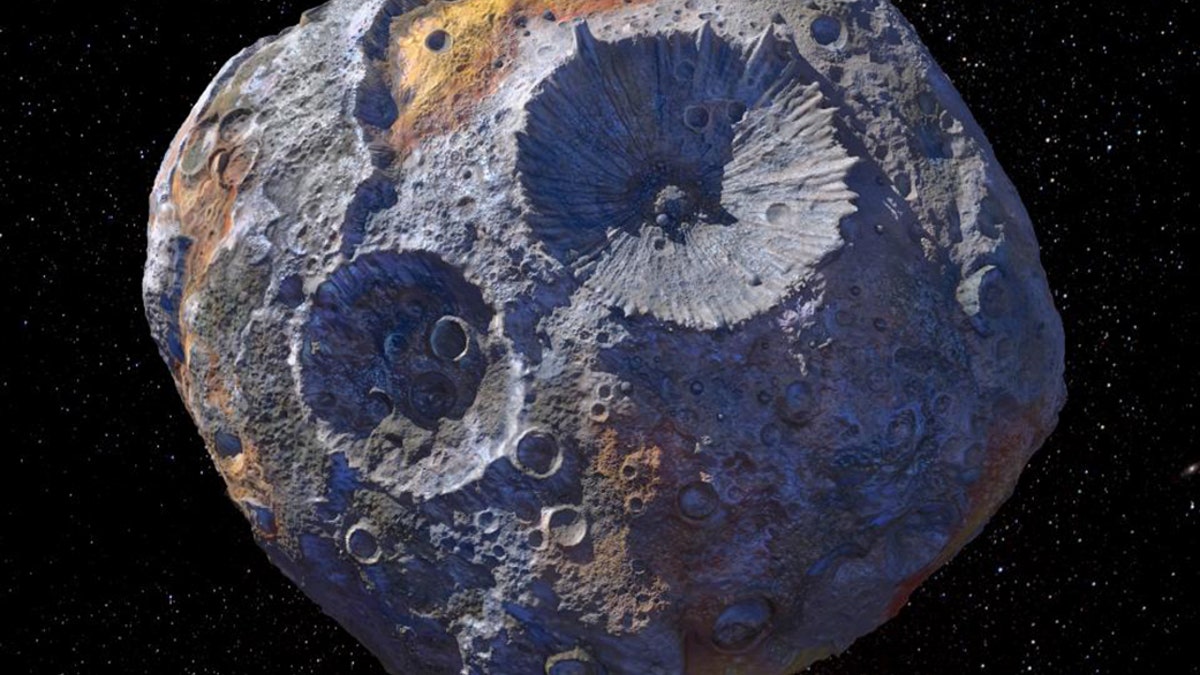
An artist's rendering of the massive metal asteroid Psyche, which orbits the sun between Mars and Jupiter. (NASA)
An ambitious mission to a "world made of metal" will help scientists better understand how Earth and other rocky planets evolved, according to a new video from NASA's Goddard Space Flight Center.
The Psyche mission will depart Earth in 2022. The original plan called for a launch in 2023, but NASA moved up the timeline to save on cost and arrive at the asteroid sooner. Under the new plan, the spacecraft will pick up speed with a Mars flyby and arrive at the asteroid, also called Psyche, in early 2026.
Observations from Earth hint that the 124-mile-wide (200 kilometers) world is 95 percent metal, just like the core of a rocky planet. [NASA's Mission to Metal Asteroid Psyche (Images)]
"All of the rocky planets we know of, they've all got a metal core in their center, and especially for the Earth, it's the source of our magnetic field," principal investigator Lindy Elkins-Tanton, a planetary scientist at Arizona State University (ASU), says in the video. "We don't know a lot about our core. What we've learned about it, we've learned indirectly, because we can't go there."
More From Space.com
"It's too hot," deputy principal investigator Jim Bell, a planetary scientist at ASU who is also heavily involved in the Curiosity and Opportunity rover missions at Mars, says in the video. "The pressure's too high. Our instruments would melt. You can't drill a hole that deep in the Earth or other planets. Turns out, we can study a planetary core out in space because there's this one object … called Psyche."
Psyche has a unique history. Scientists suspect the Massachusetts-size world is the core of a planetesimal, or a small body that could have accreted with other worlds of its type to form a planet. But as Psyche formed, it may have crashed into other bodies that stripped away its rocky mantle instead, scientists say. All that's left today is the tiny metallic core.
Some of the mission's science objectives include figuring out if Psyche is indeed an old planetesimal core, learning about the age of its surface and discerning the asteroid's topography. In the video, Bell says images would be beamed to the public and to scientists at the same time, allowing everyone to share in discoveries at the same pace.
In the video, Elkins-Tanton says she is the first woman to lead a selected deep-space mission since Maria Zuber; Zuber led the Gravity Recovery and Interior Laboratory (GRAIL) mission that mapped the moon's gravity fields using probes called Ebb and Flow. GRAIL was successful and ended a year of operations in 2012, when its probes crashed into the lunar surface as planned.
"My drive is to make everyone feel welcome and to have every voice heard," Elkins-Tanton says in the video. "We want to have as many undergraduates as we can. We want to involve as much of the public as we can. We want people to feel like this is their mission."
Elkins-Tanton adds that she did have the chance to look at Psyche once in an optical telescope in her backyard, after some colleagues generously brought one over for her to use. "It's a very, very tiny, faint dot, and that made a bunch of us cry, to think that we could send something to investigate that speck of light."
Original article on Space.com.